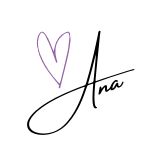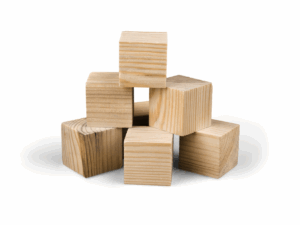One of the first forays I took into the world of productivity was just after I had my first child. I was working at a company as a Data Manager during the day and trying to figure out how to be a mother at night. I didn’t know I was neurodivergent at the time, but I vividly remember the daily feelings of panic and overwhelm.
I needed to find a way to keep everything organized—something with structure, but also flexible enough to let me do things in a way that worked for me.
That year, I listened to Getting Things Done by David Allen on the way to work. (It was on CD, so you KNOW this was a while ago!) The rules of GTD have stuck with me throughout the last 12 years of managing work, life, family, and everything else.
In this blog, I’m going to walk you through what GTD is, how it can help if you have ADHD, and how to implement it using tools like ClickUp, Airtable, or even a good old-fashioned notebook.
What is GTD?
The Getting Things Done (GTD) method is a productivity system created by David Allen. At its core, GTD is about capturing all your tasks, ideas, and commitments in a trusted system outside of your mind, allowing you to focus on what truly matters. If you’ve followed my work or webinars, you’ll know this was one of the earliest versions of what I now call a “second brain.”
GTD is also system-agnostic, meaning you can apply it anywhere, from paper to digital tools—which makes it perfect for ADHD brains that love flexibility but crave structure.
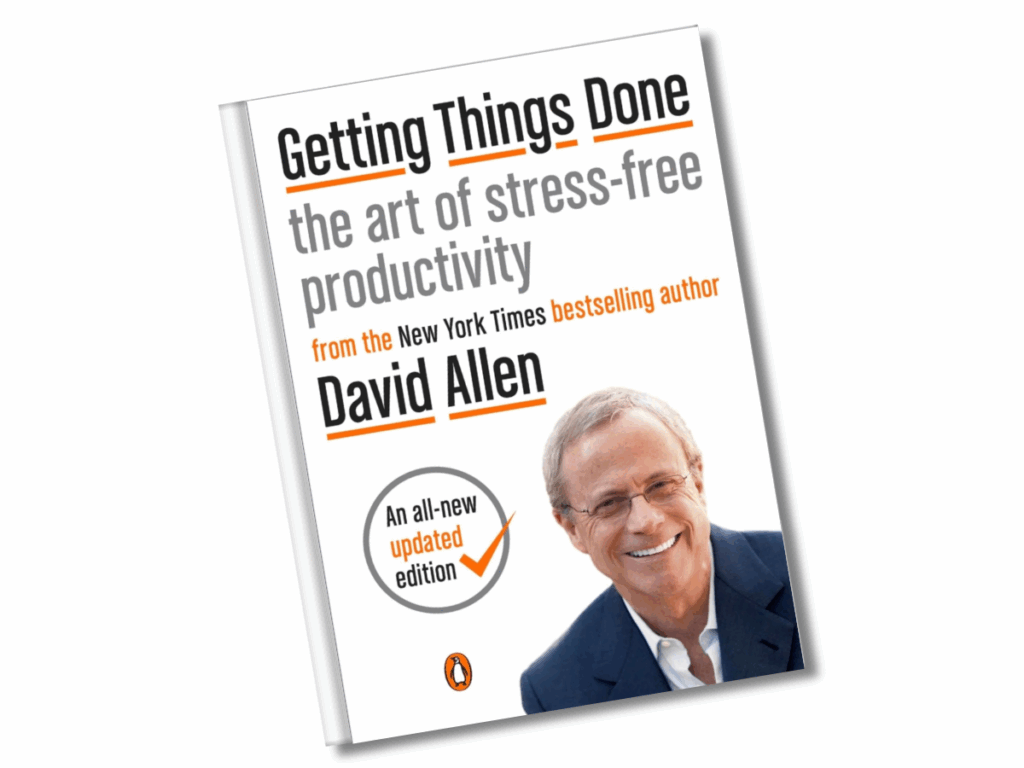
The 5 Steps of GTD:
Capture – Collect everything that has your attention into one place.
Clarify – Decide what each item means and what needs to happen next.
Organize – Sort tasks into categories like projects, contexts, or priorities.
Reflect – Regularly review your system to stay on track.
Engage – Choose what to work on based on your context, time, and energy.
How GTD Helps ADHD Entrepreneurs
🧠 1. Externalize Mental Clutter
This method is a great way to “get rid of” all of those thoughts that come roaring at you when you’re supposed to be thinking about what groceries to buy.
For ADHD minds, the constant stream of ideas can be overwhelming. GTD gives you a structure to capture everything in one trusted place. By externalizing your thoughts, you reduce anxiety and improve your focus.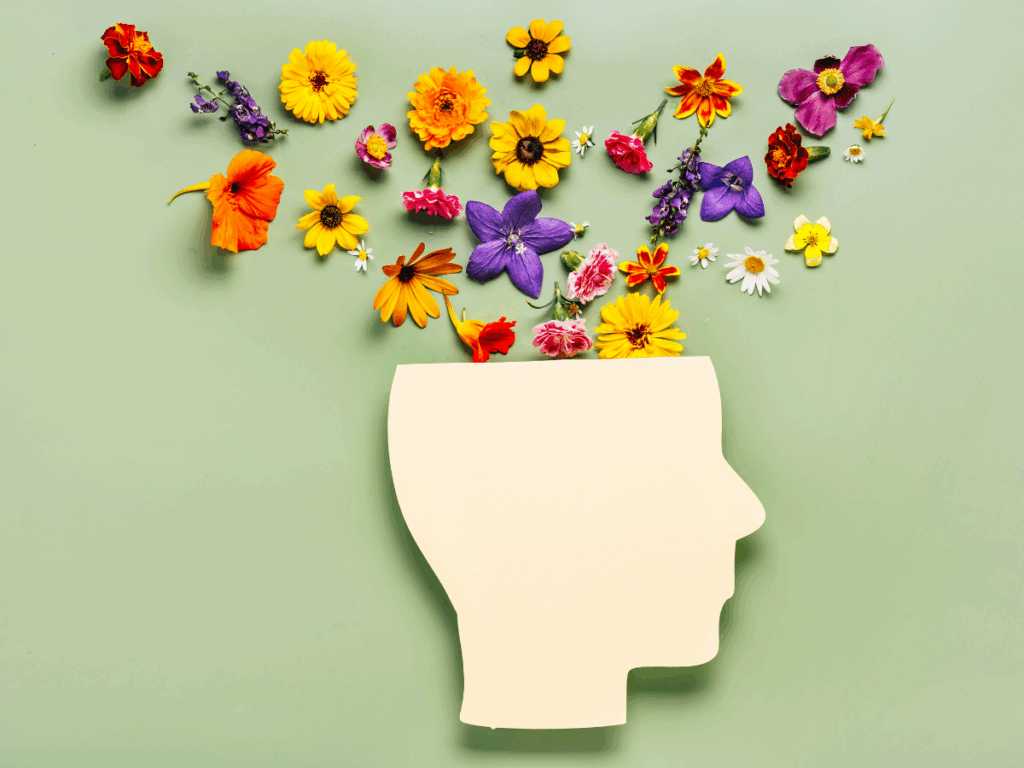
✅ 2. Turn Ambiguity Into Clear Steps
ADHD can make it hard to break tasks down into manageable steps. GTD’s Clarify and Organize phases help you define exactly what needs to happen next and in what order. Imagine the relief of starting your day already knowing what to do and what matters most.
🗂️ 3. Create Calm Through Structure
For those who feel overwhelmed by too much information, the GTD system’s categories and workflows can bring order. You’ll know what’s urgent, what’s optional, and what can wait—without trying to juggle it all in your head.
🔁 4. Build Reliable Routines with Reviews
The weekly review is a core GTD principle—and it’s gold for ADHD minds. We often live in “out of sight, out of mind” territory. By scheduling a set time to review your tasks and projects, you’ll stay accountable and avoid letting important things slip through the cracks.
5. Adapt Tasks to Your Brain & Energy
This is one of the most ADHD-friendly features of GTD: you get to choose what to work on based on how you feel.
When doing your daily review, ask:
What context am I in?
How much time do I have?
What’s my current energy level?
What’s the priority?
This lets you align your task list with your current capacity, not just your ideal schedule.
Tools to Help You Apply GTD
The original GTD method was created in a pre-digital world. The idea was to empty your brain into a physical inbox—paper notes, sticky notes, meeting minutes—and process them regularly.
Today, we have more options. You can still go analog, or you can build your system digitally (which is what I do now). Let’s walk through both.
📝 Using a Notebook (Analog GTD)
A bullet journal is a great analog interpretation of GTD. Here’s how to use it:
Capture daily thoughts, tasks, and ideas in an “Inbox” section.
Use symbols (• for tasks, ○ for ideas, → for scheduled) to differentiate entries.
During your weekly review, move items to:
Next Actions
Projects
Waiting For
Someday/Maybe
If you love writing things down, a notebook can be a great starting point. But if you work with a team or need better searchability, digital is the way to go.

💻 Using ClickUp for GTD
ClickUp is a powerful project management tool that you can easily adapt to GTD.
1. Capture
Create a “GTD” space with inbox-style task lists for Personal, Work, Clients, etc.
2. Clarify & Organize
Use custom statuses (Inbox → Next Action → In Progress → Waiting → Done) and tags for context, priority, or energy level.
3. Reminders
Set task reminders and due dates. ClickUp will nudge you when something needs your attention.
4. Reviews
Schedule a weekly review task with a checklist (or use Dashboards to visualize progress).
5. Engage
Use time tracking and custom views to pick tasks based on your energy and available time.
👉 I’ve created a ClickUp “GTD” template tailored for ADHD brains. It includes motivational cues and energy-level filters. You can check it out here
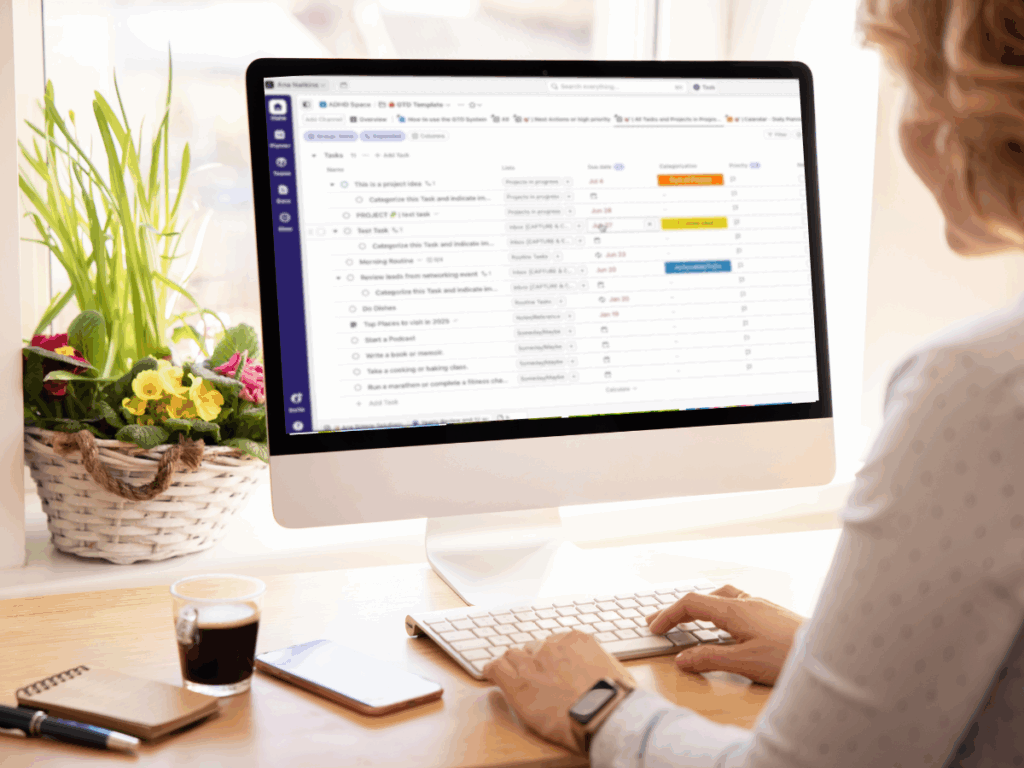
📊 Using Airtable for GTD
This is what I use myself! Airtable is great for ADHD entrepreneurs because it blends structure with visual flexibility.
1. Capture
Create a base called “GTD Dashboard.” Use one table as your Inbox.
Fields may include:
Task/Idea Name (text)
Notes (long text)
Category (Work, Personal, Clients…)
Date Captured (date)
Status (Inbox, Next Action, Waiting, Someday/Maybe, Completed)
Energy Level (High, Medium, Low)
Priority (High, Medium, Low)
2. Clarify
During your weekly review, ask:
Is this actionable?
If yes → define the next step and update status
If no → archive or move to Someday/Maybe
3. Organize
Create views to work how you work:
Kanban View by Status
Grid View by Category
Filtered Views like:
“Low Energy Tasks”
“High Priority Today”
“Waiting For Follow-Up”
4. Automate
Set up Airtable automations:
Email reminders for stale Inbox items
Slack pings for “Waiting For” tasks
Weekly checklist emailed to you for review
5. Engage
Filter by status and energy to choose the best task for your current mindset and capacity.
📱 Pro tip: Use the Airtable app or create a quick mobile form to capture tasks on the go.
🎯 Final Thoughts
Whether you’re managing a business, your home life, or both—it’s easy to feel overwhelmed, especially if your brain works a little differently. The beauty of GTD is that it offers a flexible but structured way to handle the chaos.
Start small. Pick one capture method—paper, ClickUp, or Airtable. Build your system gradually and give yourself grace as you tweak it to fit your flow.
Remember: productivity isn’t about perfection. It’s about creating a system that works for your brain, not against it.
Want Help Getting Started?
I’ve created GTD templates for both ClickUp and Airtable, specifically designed for ADHD entrepreneurs. They include built-in reviews, energy filters, and fun prompts to keep you motivated.
👉 Grab the templates here or Join my email list to get access + tutorials.
Looking to learn more?
Check out these blogs:
Simple Task and Project Management 👈
Planning your Week and Calendar Scheduling 👈
How to focus on the right things 👈
